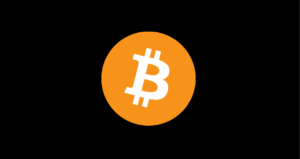Bad Debt refers to a situation where a borrower is unable to repay a debt or loan, leading to potential financial losses for the lender. In the world of cryptocurrency, bad debt can have various implications, impacting both individual investors and the overall market dynamics.
One of the key concerns related to bad debt in the crypto space involves the use of leverage in trading. Many cryptocurrency exchanges offer leverage trading, allowing users to borrow funds to amplify their trading positions. While leverage can magnify profits, it also exposes traders to higher risks. In cases where the market moves against a leveraged position, traders may face significant losses, leading to bad debt if they cannot cover their obligations.
Moreover, bad debt can also arise in decentralized finance (DeFi) platforms, which operate without traditional intermediaries like banks. In DeFi lending protocols, users can provide liquidity in the form of cryptocurrencies and earn interest on their holdings. However, if a borrower fails to repay the borrowed funds, it can result in bad debt for the liquidity providers, impacting their overall returns.
Furthermore, scams and fraudulent schemes in the cryptocurrency space can also contribute to bad debt. Ponzi schemes, fake initial coin offerings (ICOs), and other fraudulent activities can lure investors into depositing their funds with promises of high returns, only to disappear with the money later. When such schemes collapse, investors are left with bad debt, unable to recover their initial investments.
Regulatory challenges and uncertain legal frameworks can further complicate the issue of bad debt in the crypto industry. As governments around the world grapple with regulating digital assets, the lack of clear guidelines can create loopholes for fraudulent activities and financial malpractices, leading to instances of bad debt for unsuspecting investors.
In response to the risks associated with bad debt in the cryptocurrency market, some initiatives and technologies have emerged to mitigate the impact. For instance, decentralized autonomous organizations (DAOs) are self-governing entities on the blockchain that enable transparent decision-making and governance processes. DAOs can help reduce the likelihood of bad debt by ensuring that loans and investments are managed collectively and transparently.
Additionally, the rise of blockchain-based credit scoring systems and identity verification solutions can enhance the due diligence process in lending and borrowing activities, reducing the incidence of bad debt. By leveraging blockchain technology to verify user identities and assess creditworthiness, lenders can make more informed decisions and minimize the risk of default.
Overall, while bad debt remains a risk in the cryptocurrency ecosystem, increased awareness, regulatory clarity, and the adoption of innovative solutions can help mitigate its impact. By understanding the potential sources of bad debt and employing risk management strategies, investors can navigate the volatile crypto market more effectively and protect themselves from financial losses.

